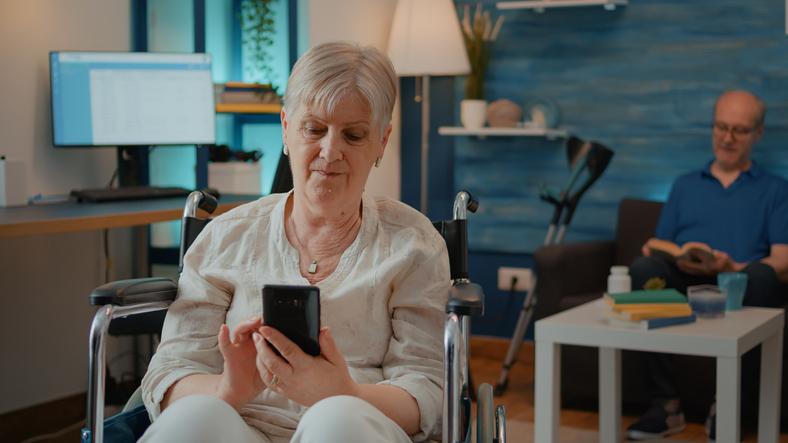Are you struggling to understand how your reverse logistics process and practices influence the people around you, their feelings, and their behavior? Do you struggle to understand your customers or attract repeat customers?
Ingram Micro Lifecycle is a third-party logistics provider, supporting customers in different industries with their technology requirements around the globe. Our services enable a circular economy while also working to recover the maximum value without compromising sustainability efforts.
We’ve created a series of articles that identify and explore the three pillars of sustainability, through the lens of reverse logistics. In the piece below, we look at the social pillar, exploring how the reverse logistics process impacts the people around us.
What are the three pillars?
If you’ve missed our last two articles, you’ll find them in our Resources section. The three complete pillars of sustainability are:
- Environmental – eco-friendly practices such as recycling and reusing materials to reduce the volume of harvested raw materials for manufacturing).
- Economic – including the monetization of assets and harnessing new revenue streams.
- Social – fair labor practices within reverse logistics roles.
The social pillar of reverse logistics
The environmental and economic pillars of sustainability for reverse logistics are widely discussed. There’s little dialogue about the impacts on people and society.
Wherever end users are involved, their interactions need to be as simple, seamless, and with as little effort as possible. This ensures that their journey is smooth, providing them with the best experience possible.
Here are some of the social impacts of reverse logistics that affect sustainability.
Customer satisfaction
This can be the be-all and end-all of your success. If your customer isn’t happy, they won’t shop with you again or recommend you to others. 9 out of 10 people read reviews before they make a purchase, and when 95% of customers are more likely to share bad experiences (compared to 87% who would share good ones), you need to make sure your customer has a satisfying experience.
Handle returns efficiently so the process meets a speedy resolution for the customer, especially if they expect a refund or exchange. The process should be simple for them to follow and convenient.
Meet the expectations and preferences of your customers wherever possible, providing warranties and repair services for products.
Use any interaction throughout the reverse logistics processes to improve customer trust and confidence. Seek to beat and excel on their expectations, keeping them informed of timely updates.
If the customer has to seek support on a product or needs to make a return, they are already disappointed in some way. Ensure the experience that they have with your reverse logistics process boosts their perception of your brand and products.
The reverse logistics process has the potential to salvage and retain their loyalty and custom.
Offering eco-friendly alternatives
Perhaps a crossover here with the environmental pillar, but eco-anxiety is becoming acknowledged as a real issue. It is described by the American Psychology Association (APA) as “the chronic fear of environmental cataclysm that comes from observing the seemingly irrevocable impact of climate change and the associated concern for one’s future and that of next generations.”
Consumers are becoming increasingly conscious of how their actions impact the environment and seek more sustainable solutions.
A robust reverse logistics program alleviates this by eliminating potential stress at the end-of-life for a technology product by offering a variety of reclamation options, such as through trade-in.
Not only can reverse logistics address the end of life of a product, but it enables a sustainable option for the ownership of a product too. Refurbished and preloved products may be preferred for those with environmental concerns at the forefront of their minds. They’ll be aware of the environmental benefits of utilizing these products instead of purchasing new ones.
These types of products are also increasingly being supplied with product warranties, perhaps not as robust as those offered with a brand-new purchase, but they lower the perceived risk of purchase, making them an attractive solution. Customers feel more comfortable purchasing a refurbished device when supported by a guarantee of quality.
Easing financial concerns
Again with refurbished devices, these provide access to products that may be outside of financial reach when offered brand-new.
There’s also increasing popularity for alternative options to ownership via leasing. Leasing products allow consumers to seek to pay for their technology monthly rather than upfront in one payment.
Reverse logistics enables each of these options as it supplies the second-hand products, lifting the grade to a useable condition ahead of reuse, and offers a source of products that can be returned again and again for different users.
Trade-in solutions are not only an economic benefit for businesses, but for consumers too. These programs give customers money back in exchange for their products. They can use this money to invest in something else or to use it against the purchase of a new or new-to-them product. This helps alleviate any financial restraints they feel towards their technology purchases.
Brand image
Reverse logistics practices and how these impact your internal and external representation will influence how stakeholders perceive you. For example, brand reputation following excellent customer service will boost how new and current customers see you, increasing loyalty. This, in turn, will look good for stakeholders invested in your company, such as employees and also the Board of Directors.
The same can be said for ESG achievements that you publicly announce, including CO2e reductions and your environmental sustainability impacts. These will improve the standing of your company and portray you in a positive light.
Data protection
Any data-bearing device that has been used by an end customer needs to be compliantly processed to ensure any residual data has been destroyed. Customers need to be able to trust those involved in the reverse supply chain to enact these processes efficiently to ensure their private and personal data is kept secure. This applies to devices in storage. Devices must be wiped as quickly as possible to minimize the risks associated with breaches, and physical theft of data-bearing products.
Reverse logistics partners with OEM accreditations will have access to manufacturer-approved software and processes that cover data destruction and so will have the resources to complete this efficiently and effectively.
Company leavers
Data protection has a bearing here. This category applies to employees when they leave a company. They need assurance that their data will be deleted from devices that they’ve had access to, particularly mobile phones and laptops/PCs.
It’s also beneficial for employers to have returned assets processed quickly and efficiently to enable the device to be re-used within the company by another employee.
Philanthropy
When monetizing unwanted or unused assets through recommerce, consider what those funds could be put towards. Perhaps you can use them to invest in new assets or other areas of the business. You could also donate those funds or a percentage to charitable projects.
Not just that, but perhaps the assets you don’t want could be data-wiped, repaired, and refurbished to good working order, and the physical products donated to charities that could put them to good use.
What you no longer had a use for could be given a new life in the hands of someone who wouldn’t otherwise have had the opportunity.
Reducing health impacts of e-waste
While you may be aware of the environmental impacts of improper processing of e-waste, the social impacts on the communities where e-waste is illegally shipped also need consideration.
Not all countries legislate against the dumping of e-waste. As of 2023, 78 countries do have legislation for processing e-waste. The United Nations recognizes 195 countries, which means less than half have legislation for e-waste. This leaves those countries open to receiving e-waste and exposed to the dangers associated with it.
In these countries, e-waste may be seen as a form of income, albeit via dangerous methods. The products are a source of precious metals, including copper, gold, and silver. To acquire these materials, e-waste may be subject to open-air burning and acid baths. These processes release harmful substances such as lead, mercury, arsenic, and brominated flame retardants (BFRs).
As well as contaminating the environment, sustained human contact with these can cause neurological damage and cancer.
Having a robust reverse logistics program that’s compliant and handles e-waste responsibly, minimizes these risks and reduces the waste that plagues these communities.
Ready to improve your social impacts with reverse logistics?
Covering the social impacts of reverse logistics, including philanthropic gestures, reducing illegal handling of e-waste, and compliantly protecting personal data, concludes our look into the three pillars of sustainability.
If you want to take advantage of the expertise of a third-party reverse logistics partner to alleviate the pressures of optimization, be sure to reach out to our team. Ingram Micro Lifecycle works with a diverse range of businesses across the globe in supporting reverse logistics practices. Get in touch with us today to see how our package of solutions can benefit you and your sustainability efforts.
Our next and final article in this series looks at specific ways you can make optimizations within your reverse logistics processes to improve sustainability across the three pillars.
Recommended further reading:
- What is reverse logistics? Definition, types, and benefits
- 7 reasons why consumers are switching from new to refurbished devices
- 4 ways a circular economy has influenced device ownership
- The rise of Device as a Service: why we’re renting technology
- Device trade-in success: the role of seamless customer experiences
- What is e-waste and the environmental toll of our tech habits?













